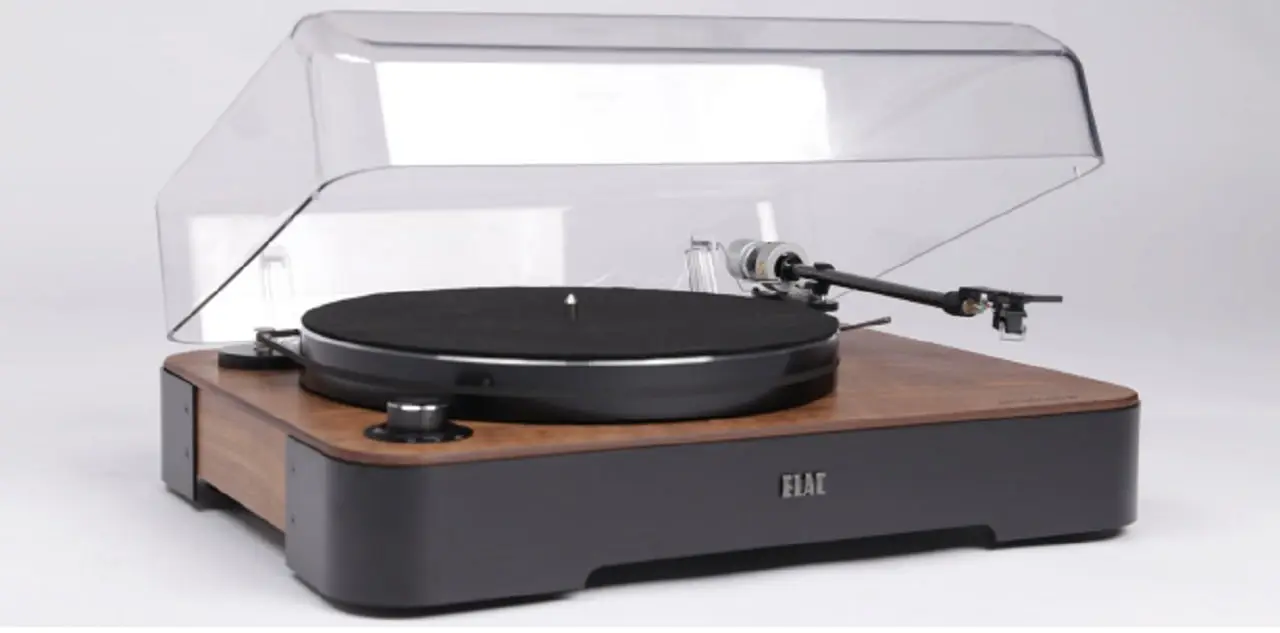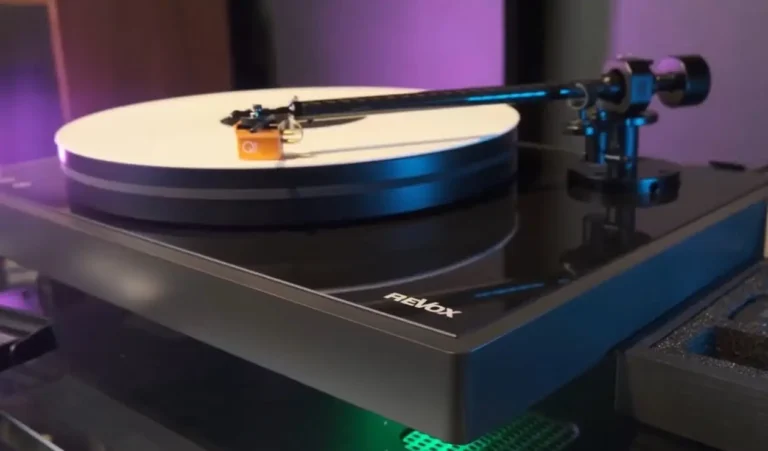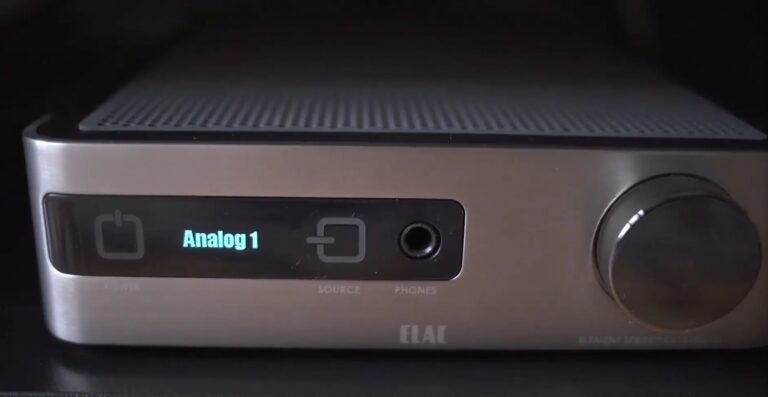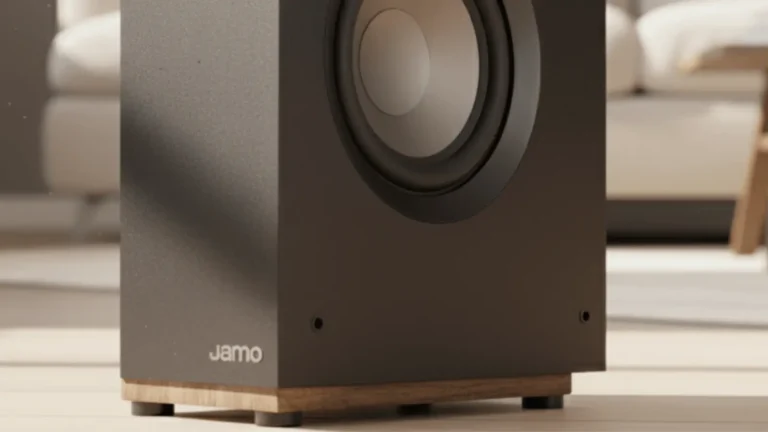ELAC Miracord 80 Turntable Review: Exceptional Performance
Once upon a time, ELAC produced record players but took a break for several decades. What is being produced now has nothing to do with the ELAC players of the distant past – now they are quite independent modern devices, which is evident in the Elac Miracord 80.
Only the line name from previous years is here; everything else is built differently—there is no roller drive and no automation. However, it is objectively clear here that the manufacturer does not use the theme of reference to past merits in any way: the company simply makes modern players the way it imagines them. The only similarity is with the modern senior model ELAC Miracord 90, released as a limited series.
The device looks quite nice. A heavy case under many layers of black piano lacquer (I assume that the case itself is made of MDF), a nice rounded shape, and curved blackened aluminum plates in the front and back, which partly imitate legs but hide real supports. It seems to look modern, but at the same time, I saw references to technical design from several periods of the past. The device is “drawn beautifully and proportionally.
There is also a version with a veneer finish, not only black lacquer, as in our case.
What’s unusual is that the younger models come with a dust cover included, while for the ELAC Miracord 80, you have to buy it separately – but it’s the same as for players with indexes 70 and 90.
The player’s main disc is aluminum and surprisingly heavy: it weighs over 5 kg, which seems unusual given the player’s overall weight of 14 kg. The drive is belt-driven with a flat, fairly tightly seated belt. The motor is built into the case, but there is a rather complex damping system between the motor and the case. One way or another, the motor is not audible, and the disc spins fairly quickly.
The disc comes with a standard felt mat, and this is a real misunderstanding. The mat is thin, it warps, and if you don’t use a clamp, it’s impossible to brush or roller the record — the record just slides along with the mat. And, getting ahead of myself, I’ll say that I didn’t like the standard mat’s effect on the sound — it gave a kind of lightness and blurriness. For the duration of the test, I replaced it with a leather one, which I liked more than the standard one (and more than some other optional options). And the issue of slippage became somewhat simpler.
The motor does not have a speed adjustment but with a declared optical speed control system. 12-volt, direct current, powered by an external power supply. There are two speeds – 33.3 and 45 revolutions. Switching is done with a round knob on the body, which also works as a switch if you move it to 0 positions. What is nice in its way is that the device does not indicate at all. The disk either rotates or does not, no other definitions are provided.
Also Read: Elac EA101EQ-G Review:
The support bearing of the disc is conditionally non-disassemblable and maintenance-free. Externally, it is similar to those support units that are used in players “externally and structurally similar to Technics”, but only with a belt drive. However, it is logical to assume that the design is somewhat more powerful – after all, the mass of the disc obliges. The fact that the disc spins up quite easily and not slowly indirectly indicates a decent quality of the bearing.
The player’s tonearm is of a fairly classic design, 10 inches, statically balanced. All the settings are their – height, anti-skating, clamping force in a fairly large range of head weights, and the clamp itself. You can even adjust the height of the microfilm. The azimuth can be adjusted by clamping the removable shell. The shell itself is not quite an ordinary design: the head is attached to a removable platform, and the platform is attached to the tonearm with one screw, and due to this joint you can move the head forward or backward or rotate it along the vertical axis. Such a mount itself is found, but in the form of a removable shell, and not in the form of a structure rigidly attached to the tube – rarely.
The tonearm tube is composite, using carbon. The design of the pivot angle is conventional, on bearings of two planes. Anti-skating is adjusted using a weight on a line. The tonearm is quite convenient and not very complicated to adjust. I was especially pleased that the central point of the pivot unit is marked on the top of its body, which greatly simplifies the use of adjustment templates, which fixes the distance between the center of the tonearm pivot unit and the center of the disc. The geometry of the adjustment is classic Baerwald, although you can experiment here if you wish.
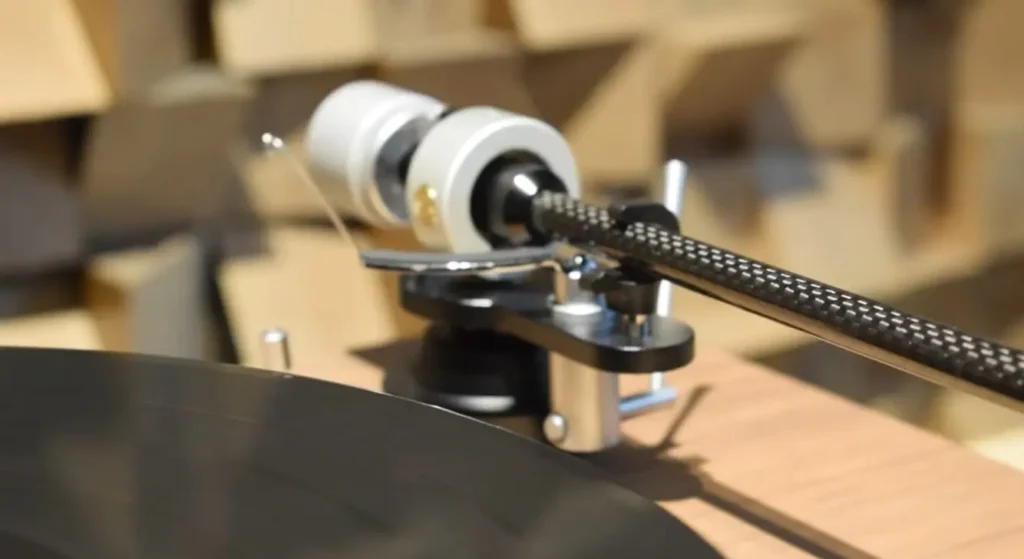
The manufacturer states that the effective mass of the tonearm is 22.8 grams, but according to my estimates and measurements, it is less than 20 grams. So, this point should be treated more carefully when setting up.
You May Like: ELAC Varro RS500 Reviewed: A Powerhouse of Clarity and Depth
The player’s connectivity is not quite standard: yes, there are a pair of RCA connectors, a ground terminal, a 12 V input for the power adapter, and a switch. But there is also a DIN-like connector marked 18 V. At first, it is not entirely clear what it is for, but as it turns out, the player can be powered from an external native AS-PPA2 phono preamplifier, removing the standard power supply. The solution is non-standard and, perhaps, interesting: the manufacturer claims that the power supply in the phono preamplifier is of higher quality.
Now we can proceed to listen. As I already mentioned, I replaced the standard mat with a leather one and chose the Clearaudio Talismann V2 Gold head for listening.
Bill Frisell, Thomas Morgan «Epistrophy». Calm, neat presentation for calm music. The sound has a rather chamber-in feel, without brightness, but with good separation of sounds and with a surprisingly decent stage in depth. The presentation is neither cold nor warm, in some ways rather a little neutral-detached. There is no obvious overflow, emphasized density of sound, there is neatness, and even a little restraint, but not yet strictness.
There is bass: clear, but not very deep, the middle is even, not accentuated, there are highs, not bright, but not washed out. Everything is somehow deliberately not sharp. The detail is not protruding – everything is heard, but slightly smoothed out, without obvious emphasis on the after-sounds. They are not lost, but in general, a feeling of neatness is created.
The dynamics are smooth, there is neither a feeling of sluggishness nor a sense of being forced. There is air in the scene, but it is difficult to call the scene distinctly airy. So far, we have a confident averaging in all parameters – clean, more like a monitor than richly emotional. Not boring and not flat, the main characteristic is rather neat.

The next recording is Nils Petter Molvær’s “Khmer”. Again detailed but not bright, the bass pleases with its clarity on the one hand, but on the other, it lacks a little volume and depth. I would consider the quality of the bass higher than expected and the quantity a little lower. The stage has good depth, and although the separation of images and planes is not so airy, nothing sticks together.
Emotionally, the sound is correct, without recoloring, but somehow it is very neat and monitor-like. I am not at all saying that there should be coloring – we don’t need it- but there could be more involvement. On the other hand, such a presentation is suitable for long, unobtrusive listening. If you want, you immerse yourself in the sound and music; if you don’t want to, you listen, keeping a distance. This character is not so common and in its way, is not bad.
The detail is at a decent level; even on complex fragments, you can hear only a very slight simplification – here, the device showed itself better than expected. At the same time, the sound is not particularly corrosive, and everything is a little calmer – but this calmness is not perceived as blurriness at all.
The device’s sound delivery turned out to be somewhat related to David Gilmour’s album “On An Island” – moderate coolness and decent detail. Everything with smooth dynamics, balanced – a kind of neatly correct sound in all characteristics, but at the same time moderately corrosive in all parameters. Everything is in moderation.
There is no obvious coloring, except that, as I mentioned above, the sound feels cool rather than warm. But the effect of immersion in listening to this particular record turned out to be more pronounced than I expected. Still, with its reserved character, it is impossible to call the player boring or emotionless.
The Toshinori Kondo “IMA” disc sounded dynamic – this is the first thing you notice. The sound here itself is not so deep in bass, but in our case, there was some richness and fullness in the mid-upper bass range, and the quality is quite decent. The dynamics are smooth and good, it is enough for this recording, which is difficult to consider simple.
Detail is also present. A bit simple in timbres, but not at all – and for devices of this class, the result is confident. The sound is not warm, and emotionality is present – again, neat and unobtrusive, at the listener’s choice, if I may say so. But it is there. And there is no dullness, sluggishness.
On this record, the high frequencies are a bit sharp, but they are not soft or smoothed out by nature. There is enough detail throughout the entire range.
The mono recording of Bach’s suites in Rostropovich’s early performance sounded like a monophonic record, but in our case, with a very decent depth distribution.
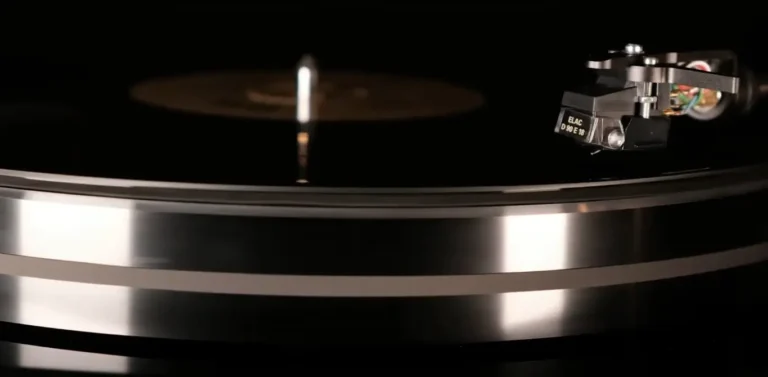
The cello sound is a bit more formal and a bit simpler than ideal, but otherwise, the presentation of the device allows listening to classical music with pleasure – there is a decent level of precision, no obvious coloring, enough detail, dynamics, and localization in space is quite natural, very close to correct (in our case for a mono recording). For its class, a very confident result, and although it is not ideal, it must be balanced in all characteristics and not with obvious distortions.
The last disc in the test is the recording of Boulez’s Conducts Debussy. Even in the difficult moments of “La Mer,” the device does not lose its dynamics and detail; here, everything is better than I could have expected. Timbrally and in detail everything is a little simpler, especially in difficult fragments, but just a little, and otherwise – smooth sound without coloration, very reliable timbres, decent dynamics, and good stage layout show that the device is also very suitable for symphonic music, and in a system corresponding to its level, the result may even be better than expected.
Is ELAC Miracord 80 Worth the Price?
For vinyl lovers seeking unparalleled playback quality and a turntable designed to elevate their listening experience, the ELAC Miracord 80 is worth the investment. While it may not be budget-friendly, its performance and craftsmanship make it a compelling option for those willing to invest in their passion for music.
Conclusions
A quiet device for long listening, including background listening. Unobtrusive and neat. You can install quite bright heads, you can play with heads with some colored feed, if you want – a balanced basis allows it. Genre omnivorous, you can listen to anything – from country to a symphony orchestra. Metal or electronics also do not contradict the style.
What’s more important: the device is extremely easy to use and will suit even a novice user. Of course, you’ll have to tinker a bit with the settings, but the process is quite visual and convenient.
ELAC Miracord 80 Price
The ELAC Miracord 80 typically falls within the $2,000 – $3,000 range (exact pricing may vary depending on the region or retailer)
ELAC Miracord 80 Specifications:
Drive Type: belt, with optical speed control sensor
Motor: 12VDC
Rotation speeds: 33, 3, and 45 RPM
Speed deviation: less than +/- 0.33%
Rumble level: less than +/- 0.15%
Disc: 300 mm, aluminum, thickness 30 mm, weight 5.6 kg
Tonearm: 10-inch, statically balanced, pivoting
Settings: altitude, azimuth, tracking force, anti-skating
Shell: Removable
Dimensions (WxHxD): 470 x 145 x 360 mm
Weight: 14 kg

